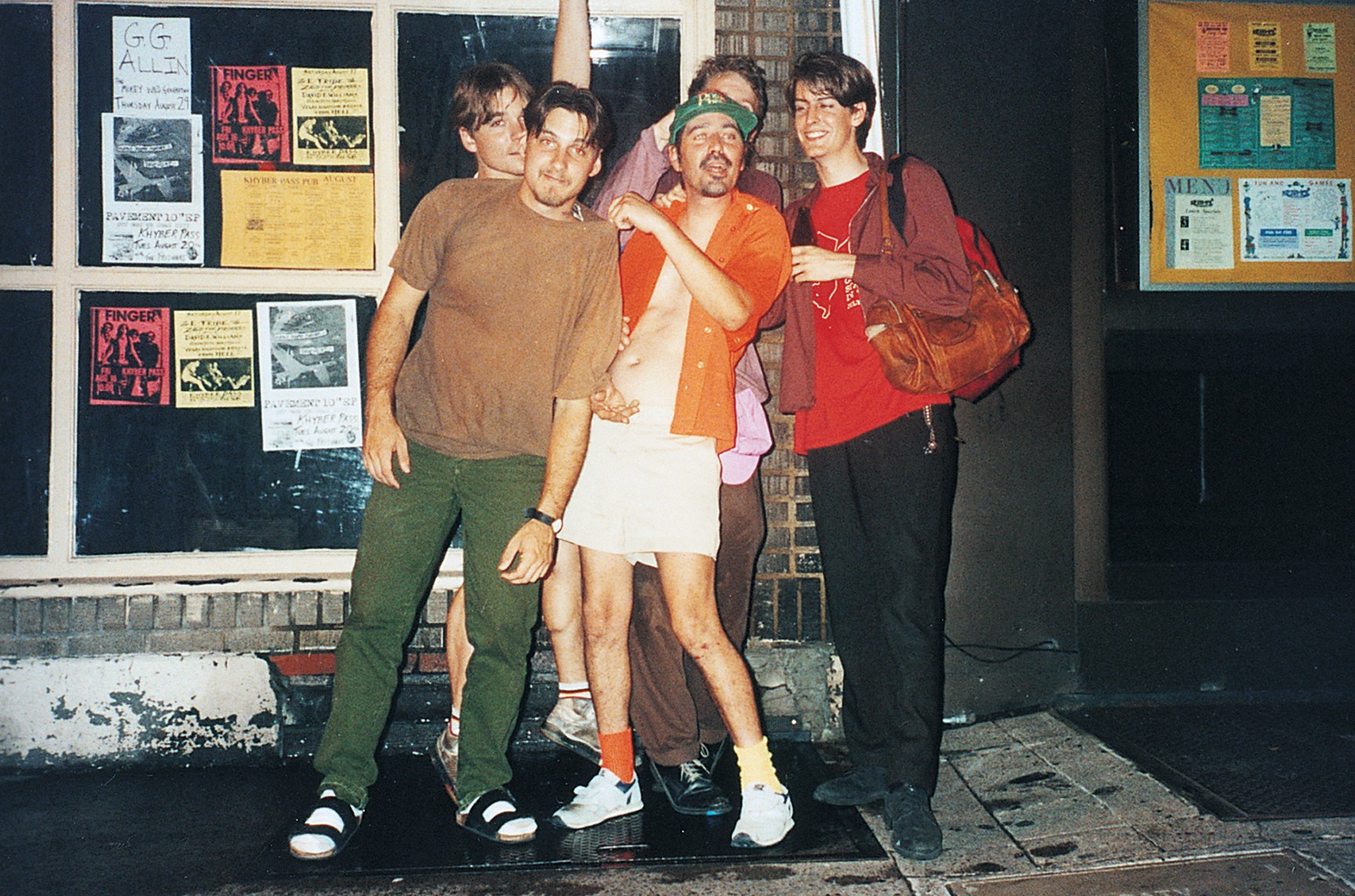Montre-moi tes cheveux, je te dirai ta musique. Dois-je préciser d’entrée de jeu que cet article est fondé sur des données scientifiques que j’ai collectées au fil de plusieurs années de recherche.
Il y a un lien tout à fait automatique entre la longueur des cheveux des membres d’un groupe (à défaut d’un groupe où tous les membres iraient chez le même coiffeur, prenons l’exemple du chanteur / principal mégalomane qui représente le groupe lors des interviews) et le style de musique joué par ce dernier. Cela n’aura échappé à personne, les membres d’un groupe de métal ont les cheveux longs (et sales ?) tandis que les bons élèves qui jouent de l’indie pop abordent fièrement une raie sur le côté digne des années 50′. Seulement, j’ai senti qu’un certain flou régnait quant à la coiffure que devait aborder un groupe de garage, un groupe de folk, un leader slacker ou un mec qui fait toujours du grunge. Still in Rock vient répondre à toutes vos questions, parce que vos angoisses sont notre priorité (hm hmm).
Il va de soi que cette analyse ne prend en compte que les groupes des 10 dernières années, car si les tendances sont vérifiables dans le temps, quelques variations depuis les années ’70 pourraient nous faire perdre notre fil conducteur. Il est également logique que le fan, la groupie ou même le gérant d’une salle aborde la coiffure qui correspond aux groupes qui font son quotidien, sous peine d’être renié et battu en place publique (sur scène).
riot grrrl / indie pop / folk / straight edge
De 5 à 10 cm :
punk rock / proto punk / rock expérimental / garage pop / power pop / bedroom pop
De 10 à 15 cm :
garage rock / psychobilly / bubblegum pop / pop spectrale / fuzz rock / slacker punk
De 20 cm et plus :
stoner / rock psyché / surf / shoegaze / métal / hard rock / grunge
**********
Une fois cela dit, il est bien entendu qu’un musicien qui déciderait de se couper
subitement les cheveux est un traitre que la communauté doit renier. Il
en va de même pour le musicien prétentieux qui a le toupet d’avoir plusieurs groupes d’un
style musical différent. Notons, enfin, que le chauve est exclu de notre analyse, parce que.
Toujours est-il que vous vous demandez sûrement quelles sont les données que cette étude statistique mondiale met en balance. Voici donc quelques exemples qui, j’en suis sûr, ôteront le moindre doute aux plus sceptiques d’entre vous.
Voyez plutôt :
De 1 à 5 cm, côté indie pop / folk / ancien punk :
Jonathan Richman qui officie sous son propre nom
Nic Hessler qui officie sous son propre nom
Juan Wauters qui officie sous son propre nom
Sufjan Stevens qui officie sous son propre nom
Ian MacKaye du groupe Fugazi
Julia Cumming du groupe Sunflower Bean
Ezra Koenig du groupe Vampire Weekend (eh… oui).
De 5 à 10 cm, côté garage pop et punk :
Mac DeMarco qui officie sous son propre nom
Wyatt Blair qui officie sous son propre nom
John Dwyer du groupe Thee Oh Sees
Tim Presley du groupe White Fence
Bradford Cox du groupe Deerhunter
Nathan Williams du groupe Wavves
Andrew Savage du groupe Parquet Courts
Matthew Melton du groupe Warm Soda
De 10 à 20 cm, côté garage :
Ty Segall est connu pour avoir réanimé le garage rock dans la continuité de Jay Reatard.
Oliver Henry Burslem du groupe Yak
Paul Jacobs qui officie sous son propre nom
John Barrett du groupe Bass Drum of Death
Kyle Thomas du groupe King Tuff (à la limite car il aime le stoner, ça fait sens)
Les groupes français ne dérogent pas à la règle, voir par exemple :
Cédric Bottacchi du groupe Dusty Mush
Benoit Raton Sauvage du groupe Wild Raccoon
Paul Rannaud du groupe Volage
De 20 cm à l’infini, côté stoner :
Stu Mackenzie du groupe King Gizzard
Charles Moothart du groupe CFM
Chad Ubovich du groupe Meatbodies
Kevin Parker du groupe Tame Impala
Zachary Cole Smith du groupe DIIV
Kurt Cobain du groupe Nirvana (il est pas mort, ok?!)
Et tous les groupes de classic rock des années ’70, quand même.
Voilà la preuve que notre grille d’analyse est 100% véridique, 100% scientifique, 100% tout ce que vous voulez. Je propose ainsi la création de l’amicale des coiffeurs rock’n’roll qui serait chargée de faire régner l’ordre et pourrait interdire l’accès à la scène de tous les groupes qui ne respecteraient pas la longueur capillaire correspondant à leur musique. Il en va de la survie de la musique indépendante. Rien de moins.
********
ENGLISH Version
(french above)
********
Show me your hair, I’ll tell you what your music is. I ought to specify right off the bat that this article is based on scientific data, which I have gathered during many years of research.
There is an automatic link between the hair length of the members of a music band (for lack of a standardized band, let’s take the example of the singer/main megalomaniac representing the group in interviews), and the music style they play. As you are aware, the members of a metal band have long (and dirty?) hair, while the role models playing indie pop proudly wear a side par, straight from the 50s. Yet, I have noticed quite a blur concerning the mandatory hairstyle of a garage band, a folk group, a slacker leader or a guy still playing grunge. Still in Rock is here to answer all these questions, because your anxiety is our priority (hm hmm).
Needless to say that this analysis only takes into account bands from the last decade, because while there are verifiable trends in history, some changes that have occurred since the 70s could make us lose track. It’s also logical that the fan, the groupie, or the owner of a music venue must wear the haircut that matches with the bands that are part and parcel of their daily lives, at the risk of being disowned, and beaten in public (on stage).
**********
From 1 to 5 cm :
riot grrrl / indie pop / folk / straight edge
From 5 to 10 cm :
punk rock / proto punk / experimental rock / garage pop / power pop / bedroom pop
From 10 to 15 cm :
garage rock / psychobilly / bubblegum pop / spectral pop / fuzz rock / slacker punk
20 cm and more :
stoner / psychedelic rock / surf / shoegaze / metal / hard rock / grunge
**********
Having said that, it’s obvious that a musician who would suddenly decide to cut his hair is a traitor who must be excluded from the community. The same goes for the conceited musician who has the nerve of being part of several bands with different music styles. Finally, let’s note that bald people are excluded from our analysis, because reasons.
The fact remains that you are probably wondering what the data highlighted by this global statistic study is putting at stake. Here are a few examples that, I’m sure, will remove any doubt to the most skeptical of you.
See for yourself:
From 1 to 5 cm, on the side of indie pop / folk / old punk:
Jonathan Richman, playing under his name
Nic Hessler, playing under his name
Juan Wauters, playing under his name
Sufjan Stevens, playing under his name
Ian MacKaye from Fugazi
Julia Cumming from Sunflower Bean
Ezra Koenig from Vampire Weekend (yes…)
From 5 to 10 cm, on the side of garage pop and punk:
Mac DeMarco, playing under his name
Wyatt Blair, playing under his name
John Dwyer, from Thee Oh Sees
Tim Presley, from White Fence
Bradford Cox, from Deerhunter
Nathan Williams, from Wavves
Andrew Savage, from Parquet Courts
Matthew Melton, from Warm Soda
From 10 to 20 cm, on the side of garage:
Ty Segall, best known for having revived garage rock, following Jay Reatard’s work
Oliver Henry Burslem, from Yak
Paul Jacobs, playing under his name
John Barrett, from Bass Drum of Death
Kyle Thomas, from King Tuff (on the upper limit because he likes stoner, makes sense)
The same goes with French bands, see for example:
Cédric Bottacchi from Dusty Mush
Benoit Raton Sauvage from Wild Raccoon
Paul Rannaud from Volage
From 20 cm to infinity, on the side of stoner:
Stu Mackenzie, from King Gizzard and the Lizard Wizard
Charles Moothart, from CFM
Chad Ubovich, from Meatbodies
Kevin Parker, from Tame Impala
Zachary Cole Smith, from DIIV
Kurt Cobain, from Nirvana (he’s not dead, alright?)
And all the 70s’ classic rock bands.
*******
Here is the proof that our grid of analysis is 100% true, 100% scientific, 100% whatever you want. I hereby suggest the creation of the Rock’n’Roll Hairdressers Association, that would be in charge of maintaining order, and could forbid access to stage to the bands that wouldn’t respect the hair length fitting their music. The survival of independent music is at stake. Nothing less.











Post a comment